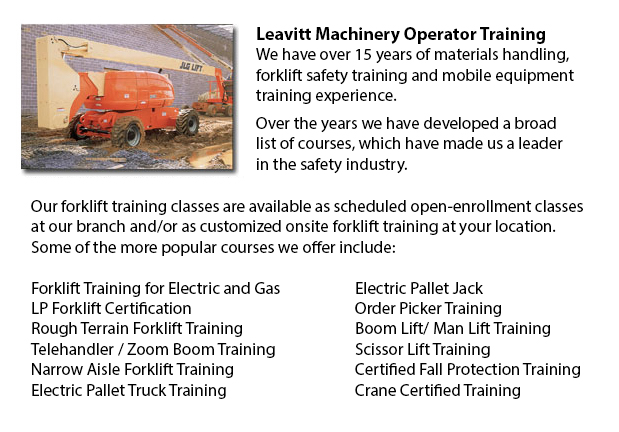
Boom Lift Safey Training Penticton - Boom lifts are a type of elevated work platform or aerial lifting device that are usually used in industry, warehousing and construction. Boom lifts could be utilized in almost whatever surroundings because of their versatility.
Elevated work platforms allow workers to access work areas that would be unreachable otherwise. There is inherent risk in the operation of these devices. Workers who operate them should be trained in the correct operating methods. Accident prevention is paramount.
Boom Lift Training Programs cover the safety aspects involved in using boom lifts. The program is suitable for individuals who operate self-propelled elevated work platforms and self-propelled boom supported elevated work platforms. Upon successfully completing the course, participants would be given a certificate by a person who is qualified to verify completing a hands-on evaluation.
To help train operators in the safe use of elevated work platforms, industry agencies, federal and local regulators, and lift manufacturers all play a role in providing the necessary information and establishing standards. The most essential ways to avoid accidents associated to the utilization of elevated work platforms are the following: checking equipment, having on safety gear and performing site assessment.
Vital safety considerations when operating Boom lifts:
Operators should observe the minimum safe approach distance (or also called MSAD) from power lines. Voltage can arc across the air to be able to find an easy path to ground.
To be able to maintain stability as the platform nears the ground, a telescopic boom should be retracted before lowering a work platform.
Individuals working from the platform of a Boom lift must tie off to be able to guarantee their safety. Safety harness and lanyard combinations must not be connected to any anchorage other than that provided by the manufacturer, never to other wires or poles. Tying off may or may not be required in scissor lifts, which depends on specific local regulations, employer guidelines or job risks.
Avoid working on a slope that goes beyond the maximum slope rating as specified by the manufacturer. If the slop goes beyond requirements, therefore the machine should be transported or winched over the slope. A grade can be measured without problems by laying a straight edge or board of at least 3 feet on the slope. Then a carpenter's level can be laid on the straight edge and the end raised until it is level. The percent slope is obtained by measuring the distance to the ground (likewise referred to as the rise) and then dividing the rise by the length of the straight edge. Then multiply by 100.
-
Forklift Certification Schools Penticton
Forklift Certification Schools Penticton - In North America, forklift certification is mandatory, making forklift training programs essential for both the business and their employees working as operators of forklifts. Forklift training focuses on sa... More -
Telehandler Training Courses Penticton
Telehandler Training Courses Penticton - The employer has the responsibility to make sure that their personnel are trained to work proficiently utilizing telehandler machinery. The workers have to be assessed for their ability to utilize the machine.... More -
Certified Fall Protection Training in Penticton
There are many injuries at work linked to falling and lots of fall-related deaths reported each and every year. Most of these instances might have been prevented with better training, better precautions in place, and by properly equipping employees b... More -
Zoom Boom Training Penticton
Zoom Boom Training Penticton - Zoom Boom Training is designed to train operators on variable reach forklifts. The objectives of the training are to impart an understanding of the physics of the machine, and to outline the operator's job. This course... More -
Crane Training Schools Penticton
Crane Training Schools Penticton - We have designed various Mobile Crane Operation programs at our Crane Training Schools. These programs are recommended for the experienced operator who needs re-certification or certification, and for inexperienced... More -
Aerial Lift, Boom Lift, Man Lift, Scissor Lift Training in Penticton
Lift tables or also referred to as scissor hoists can lift up both individuals and materials vertically. They are normally utilized in industrial, construction and commercial environments. Normally, the use of a scissor forklift is to lift and lower... More -
Forklift Training Program Penticton
Forklift Training Program Penticton - The forklift is a common powered industrial vehicle which is in wide use nowadays. They are occasionally known as hi los, lift trucks or jitneys. A departments store will utilize the forklift to unload and load m... More -
Overhead Crane Training Penticton
Overhead Crane Training Penticton - An overhead crane is a large crane used to move and lift huge, heavy objects that cannot be lifted by hand. An overhead crane is normally fixed in position while in use. These machines are capable of moving huge vo... More

Forklift Training Penticton
TOLL FREE: 1-888-254-6157
Penticton, British Columbia
forklifttrainingpenticton.com
Email Us
About Us


